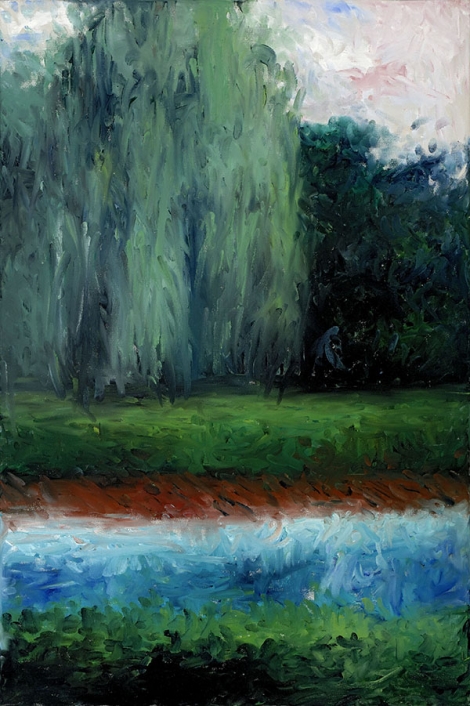Poets and Painters
Permanent Collection Installation
November 4, 2016–October 30, 2017
The precise yet commonplace phrases of Frank O’Hara’s poetry comprised a style so distinctive that one critic referred to it as the “I-do-this and then I-do-that school of poetry.” Along with fellow practitioners John Ashbery, Kenneth Koch, and James Schuyler, they came to be known as the New York School of Poets. As a group they were in step with the visual arts and counted painters among their closest friends—friendships that reached from New York to the East End, and produced remarkable artistic collaborations.
The painting and poem Oriane
pays tribute to the beloved dog (“half Whippet, half Border Collie”) shared by Schuyler and Darragh Park. Joe Brainard was closely linked with both poets and painters of the New York School and his collage of words and images is a wistful visual ode. Ray Johnson’s artistic practice was dubbed “Mail Art,” and in the collage Marianne Moore’s Hat (1973), he pays homage to the renowned American poet, deceased the previous year, by referencing the black tricorne hat she always wore. Johnson added instructions to detach and mail portions of the sheet to John Lennon and Yoko Ono, two other famous poets of the day.
To cheer their friend the artist Mike Goldberg during an extended hospitalization in 1964–1965, O’Hara and the young poet Bill Berkson, who had been Koch’s student at Columbia University, conspired to mail Goldberg large sheets of drawing paper with their writings added, giving the painter the option to fill them further with paint or drawing or collage.
Berkson once described his writing style as having a “sense of scatter,” and it is the purposeful disconnection between the words and painted collage that gives the resulting work its meaning.
Such collaborations continue in the recent Train Yourself to Lose: “I see poetry in everything, even you,” by artist Dan Colen and filmmaker Harmony Korine. In using a variety of
unconventional mediums, like flowers and dirt, Colen has said he wants to relinquish control and allow the final result to be guided by the behavior of the material. Korine’s words floating freely above, perhaps snippets from an unwritten screenplay, subscribe to the same guiding principle.
Some of the most personal and compelling interactions between poets and painters come in the form of lovingly rendered portraits. Alex Katz marks his friendship with O’Hara in this sharply rendered, graphically expressed portrait. Billy Sullivan chronicles the lives of his celebrated artistic circle, here in an almost breathy, translucently rendered portrait of poet Max Blagg, a friend since the 1970s.




